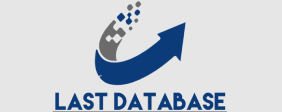Are you looking to improve your website’s visibility and drive more organic traffic to your site? If so, mastering on-page SEO best practices is essential for achieving higher rankings on search engine results pages. In this article, we will dive into the key strategies and techniques you need to implement to optimize your on-page SEO efforts successfully.
Introduction to On-Page SEO
On-page SEO refers to the optimization of individual web pages to shop improve their search engine rankings and attract more relevant traffic. By focusing on on-page factors such as content quality, keyword optimization, and meta tags, you can enhance the visibility of your website and increase its chances of ranking higher in search results.
Why is On-Page SEO Important?
On-page SEO plays a crucial role in helping search engines understand the relevance and value of your content. When done correctly, on-page optimization can signal to search engines that your website is a valuable resource for users, leading to higher rankings and increased organic traffic.
Key On-Page SEO Best Practices
2. High-Quality Content
Creating high-quality, valuable content is essential compliance with bangladesh data laws for engaging users and keeping them on your site. Make sure your content is well-written, informative, and relevant to your target audience. Use heading tags to structure your content, and incorporate multimedia elements such as images and videos to enhance user experience.
3. Meta Tags Optimization
Optimizing your meta tags, including title tags and meta descriptions, is crucial for on-page SEO.
4. Mobile-Friendly Design
With the increasing use of mobile devices, having a mobile-friendly website is no longer optional – it’s a necessity. Ensure your site is responsive and optimized spam data for mobile users to provide a seamless browsing experience across all devices.
5. Page Speed Optimization
Page speed is a critical ranking factor that can impact user experience and search engine rankings. Improve your site’s loading speed by optimizing images, enabling browser caching, and minimizing server response time to create a faster and more efficient website.
Start implementing these best practices today to boost your site’s ranking and attract more visitors.

